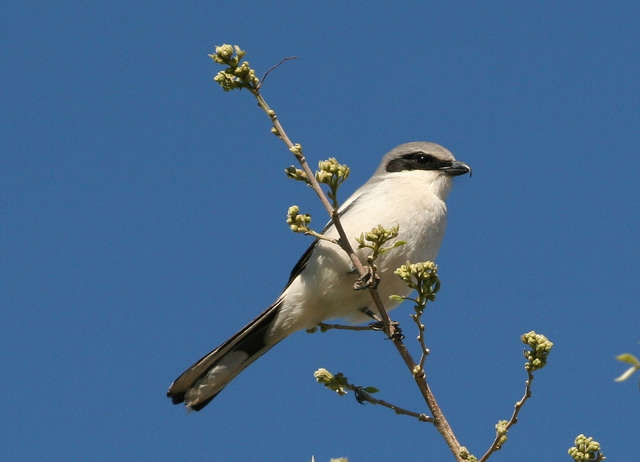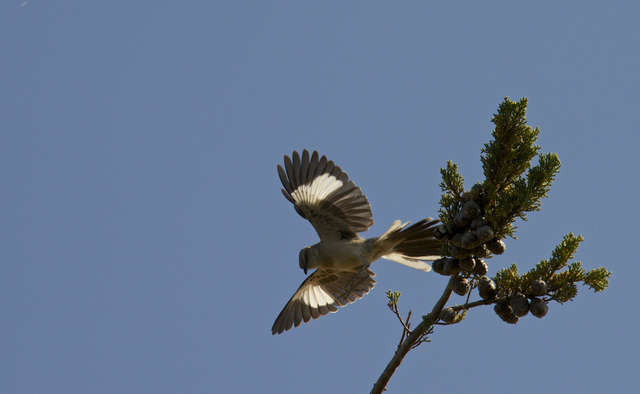Sometimes you just get lucky. Rare birds spotted!

The loggerhead shrike uses its strong, hooked beak to capture prey. The feet, however, do not have strong talons like a hawk, so shrikes use thorns or barbed wire to hold their prey. Its status in Minnesota was recently changed from threatened to endangered. (Photo: Jean-Guy Dallaire)
The arrival of June brings the start of the breeding bird survey season and means everything shifts into high gear for FMRs conservation staff. Breeding bird surveys are a tool that we use to evaluate the progress of restoration projects. When a cropland is converted to prairie, for example, we typically see a dramatic increase in the number of species, as well as a shift in the types of species, from more generalist species (e.g. mourning dove, American goldfinch, American robin, song sparrow) to more habitat specialists (e.g. grasshopper sparrow, field sparrow, bobolink). The surveys are a way to help quantify and document the habitat improvements.
In the wee hours of the morning, while most people are still in REM mode, Conservation Director, Tom Lewanski and Senior Ecologist, Karen Schik are out in the field, having a different sort of rapid eye movement as they scan the landscape for birds. Ears are also on high alert, sorting out the cacophony of songs and calls that land on the eardrums. Most of the birds detected have been noted in previous surveys eastern wood pewee, rose-breasted grosbeak, bluejay, American redstart. While birding is always a delight, its identifying rare species or those new to a site that really gets the heart racing.

The white windows in the wings of the northern mockingbird are conspicuous during flight.
Photo: Dona Foster
The first survey of 2014 did not start out on a good note, with rain and an unusually low number of species at our first site. Fortunately, that trend did not continue. While surveying an expansive grassland restoration project in Cottage Grove on our second survey, we detected two Bells vireo, a special concern species, as well as a pair of loggerhead shrikes, now a state endangered species. Both species were not entirely unexpected, having been recorded there before, but very exciting nonetheless. A bigger surprise, however, was finding a northern mockingbird. Though not a rare species, it is quite unusual in the state, as its normal range is much further south in Iowa.
After recovering from the elation of that morning, we were treated two days later with discovery of a state threatened species, Henslows sparrow, at a prairie reconstruction project at the Hastings Sand Coulee Scientific and Natural Area. Recent clearing of large stands of conifers at this site, and beginning to restore the native prairie, were very likely the factors that provided suitable habitat for this species. A true testament that if you build it they will come! Whether this bird will find a mate there remains to be seen, but if not this year, perhaps next.
Large grassland areas, especially native prairie grasslands, are in exceedingly short supply in the state, and dwindling ever faster as the market for corn continues to grow. Protection and restoration of native prairie and other natural areas, especially along the Mississippi River flyway has become increasingly important.